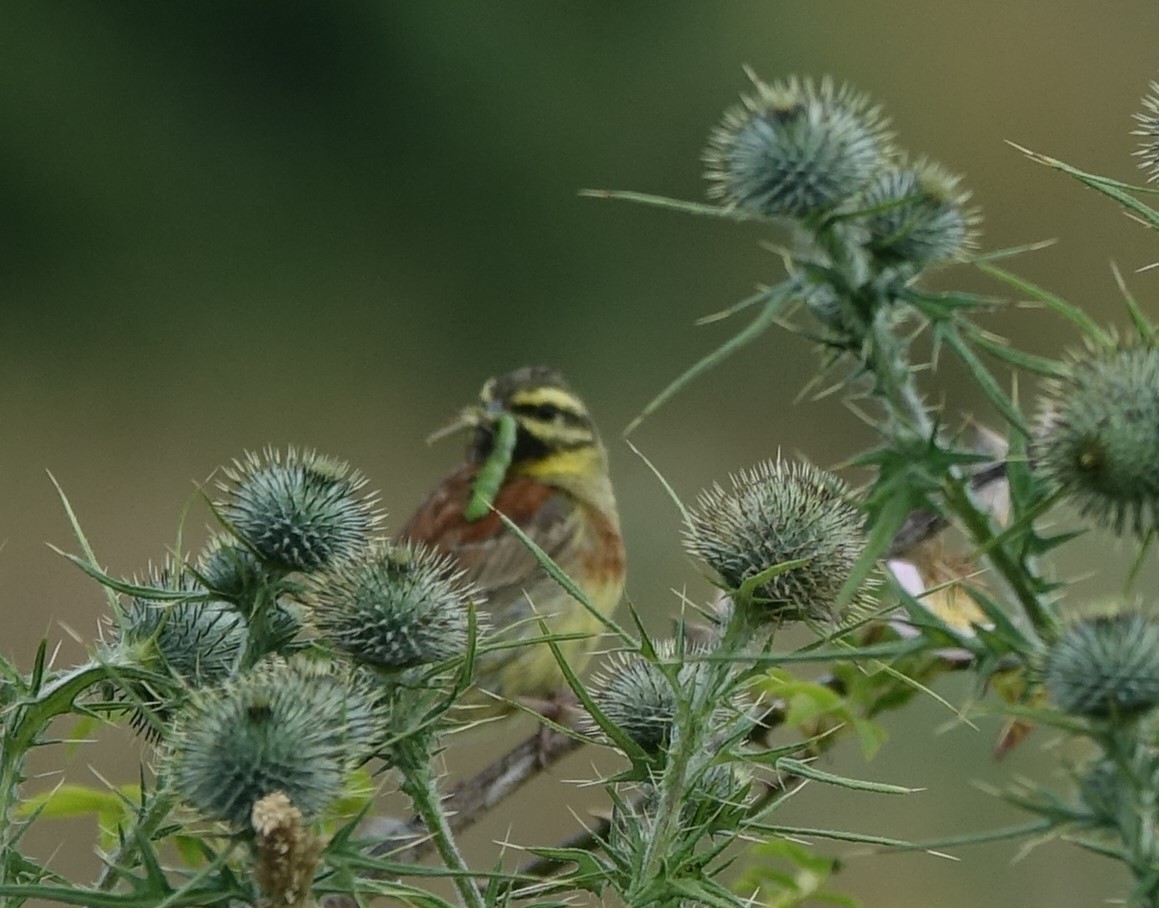Torbay Coast & Countryside Trust is pleased to announce the results of their latest survey on the Cirl Bunting population at Berry Head National Nature Reserve. This study, conducted with the invaluable assistance of volunteers, marks a significant milestone in ongoing conservation efforts for this rare and beautiful bird species.
During the second seasonal survey of the year, volunteers and rangers observed seven male Cirl Buntings. Notably, six of these males were heard singing in order to establish territories and attract a mate. One of the males was seen with a juicy green caterpillar in its beak, presumably destined for its brood, a positive sign of nesting success.
In addition to the Cirl Buntings, the survey team recorded several other bird species, highlighting the biodiversity at Berry Head. Observations included several Skylarks, Linnets, a young Stonechat, a Peregrine, and a Kestrel hovering over the quarry, alongside numerous common species.
The Cirl Bunting is known for its distinctive call that can be heard up to 500 meters away. Its name is derived from the Italian word for ‘to chirp’. Once common across farmland in Southern England, Cirl buntings are a nationally rare species with a stronghold in South Devon. Unfortunately, Cirl Bunting numbers in the UK have declined drastically due to habitat loss, pushing them to the brink of extinction. Changes in agricultural practices after World War II led to reduced availability and suitability of forage and nesting sites and numbers fell to below 120 by 1989. Thanks to RSPB research and liaison with wildlife-friendly farmers and landowners over 1000 pairs were recorded in 2016.
During the winter these birds require a seed crop and favour weedy stubbles like barley, sown in the spring by Torbay Coast and Countryside Trust at Gillard Road Nature Reserve to help this species. The Ranger team also top this up with a special seed mix bought in for that purpose. The large area of scrubby grassland at Berry Head, flanked by billowing hedges of dense, thorny scrub is good foraging and nesting habitat for Cirl buntings, as well as a host of other birds such as Whitethroats and Blackcaps.
“This survey underscores the importance of Berry Head as a crucial habitat for Cirl Buntings and other bird species,” said Marije Zwager, Engagement Ranger at Torbay Coast & Countryside Trust. She continued: “The data collected not only enriches our understanding but also aids in the conservation strategies for these birds, ensuring their protection.”
The findings from this survey have been submitted to the Royal Society for the Protection of Birds (RSPB), contributing to a broader understanding of Cirl Bunting populations and their habitats across the UK.
Torbay Coast & Countryside Trust manages nearly 80% of all green spaces in Torbay, including Berry Head National Nature Reserve. The Trust is dedicated to preserving the natural environment and promoting biodiversity through active conservation and community involvement.


